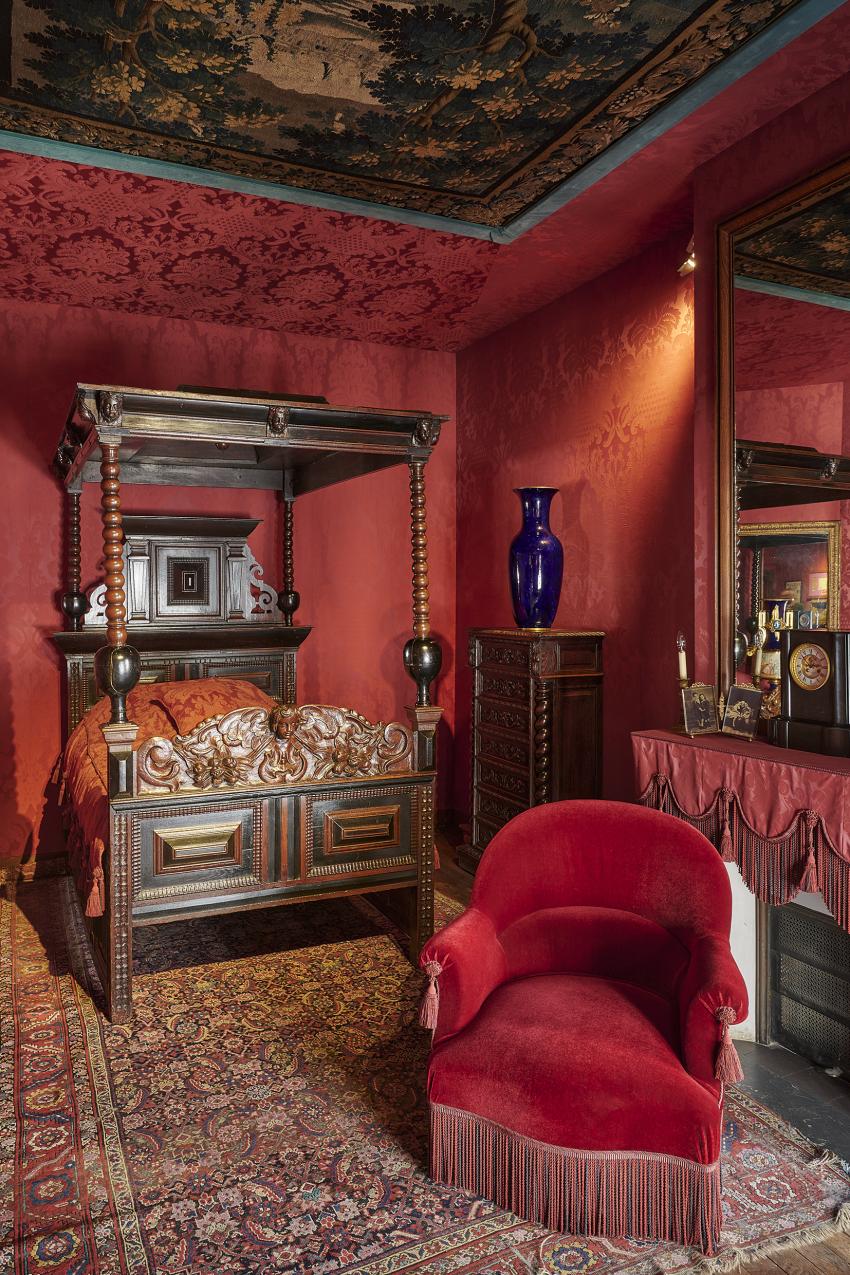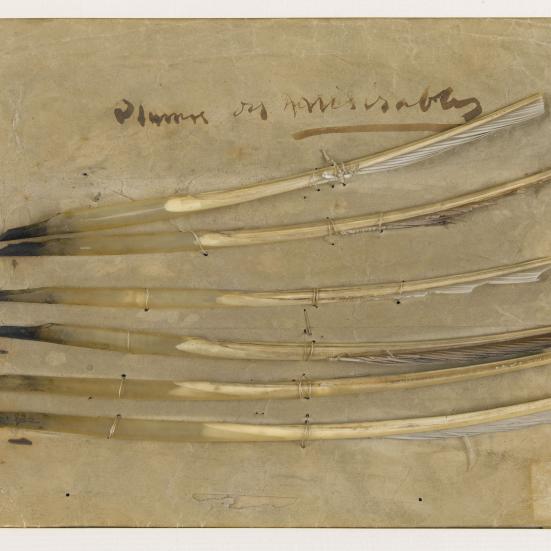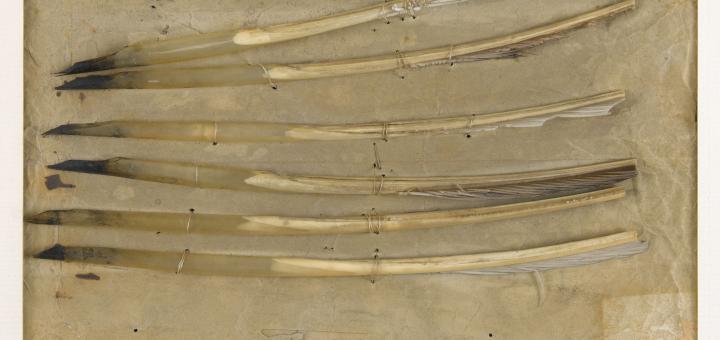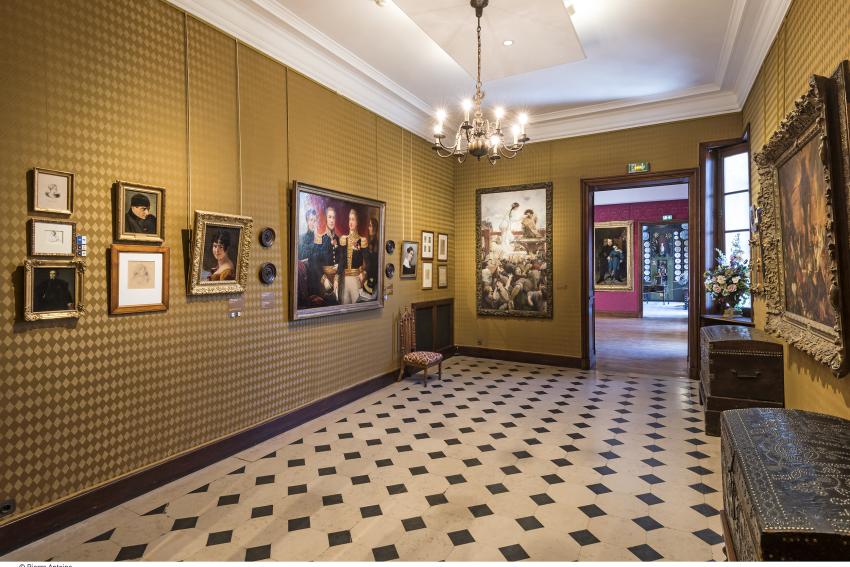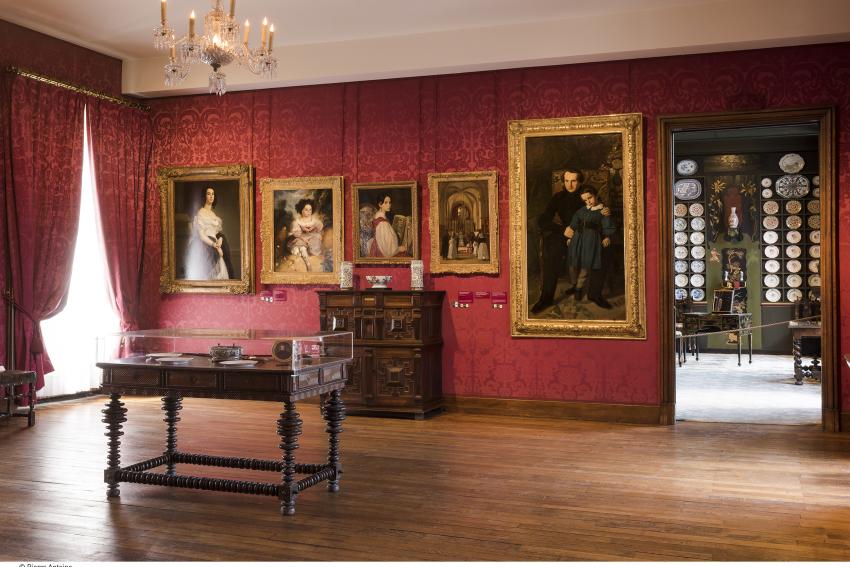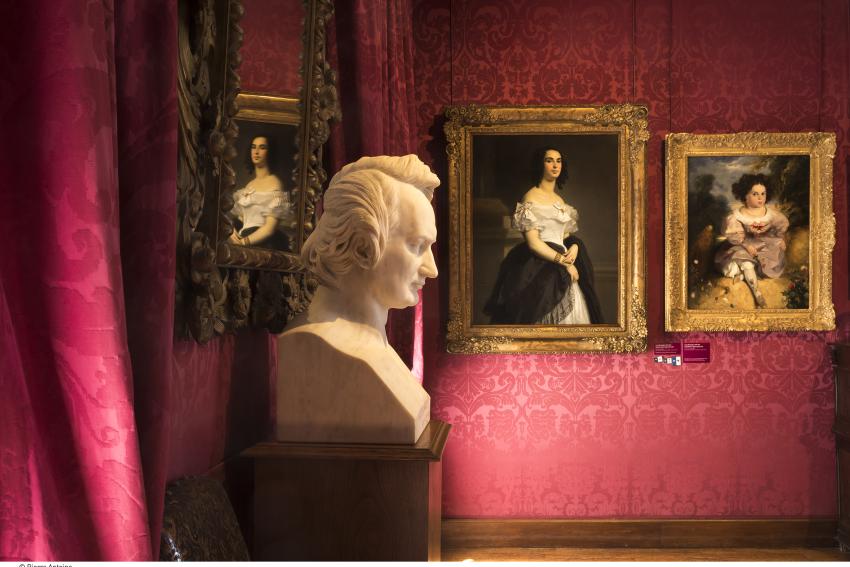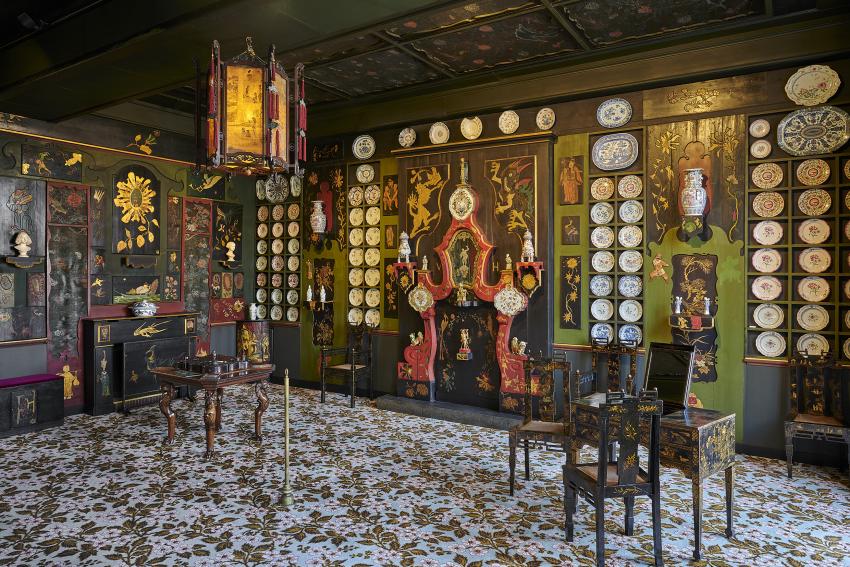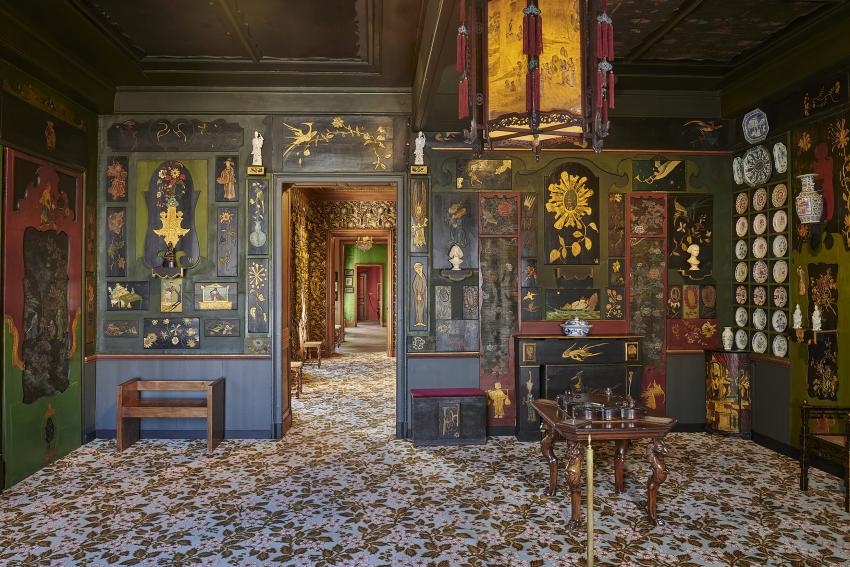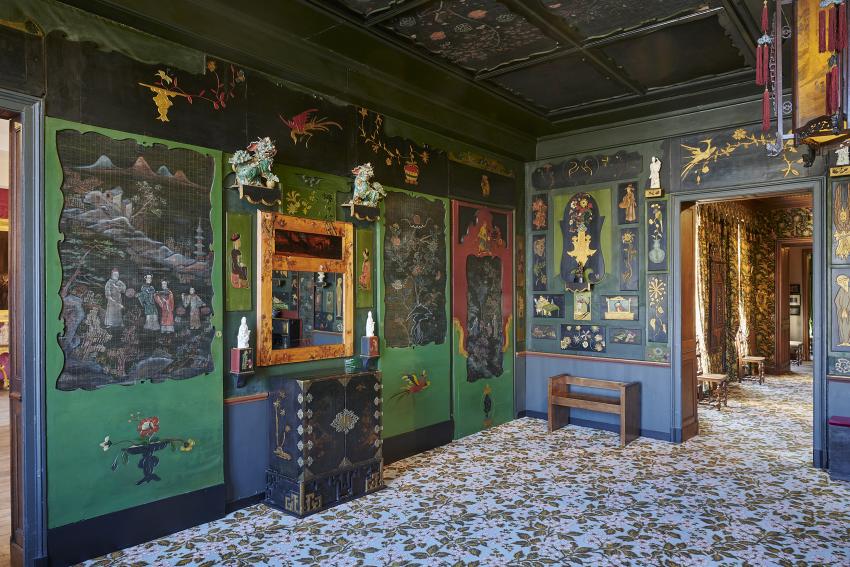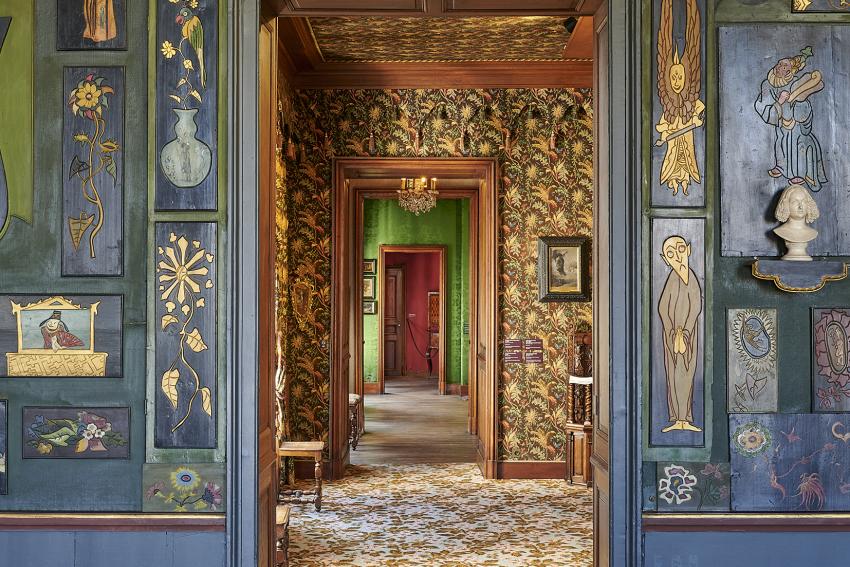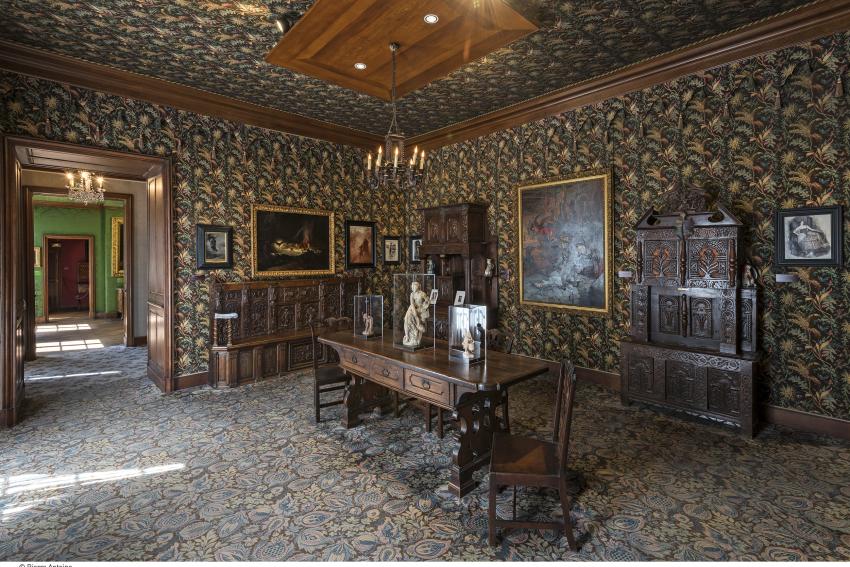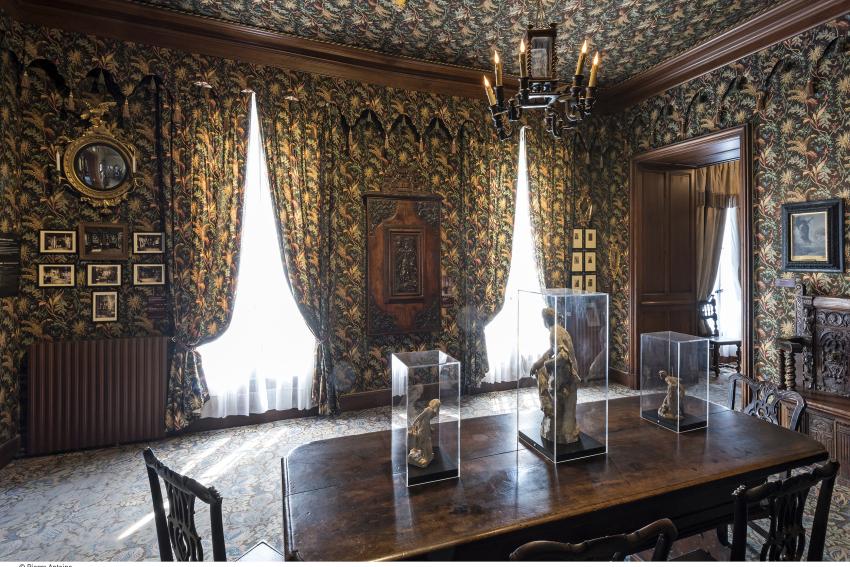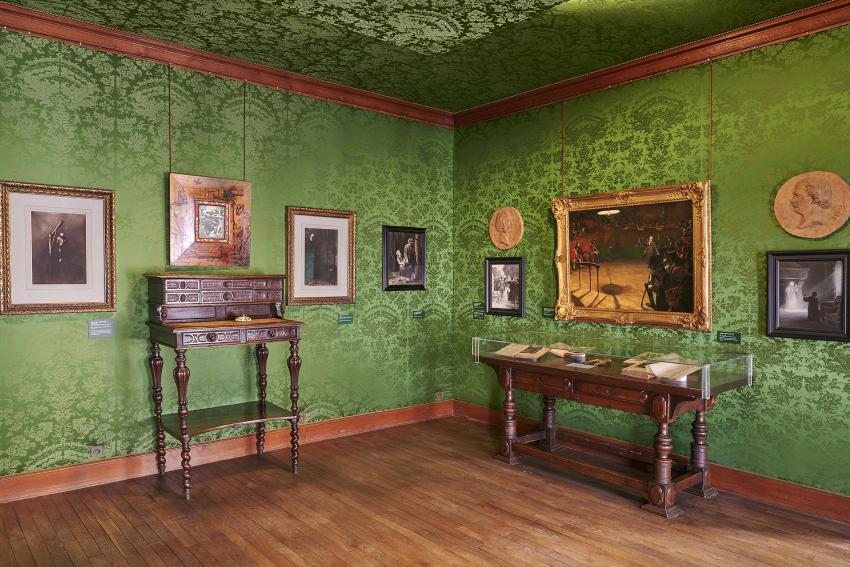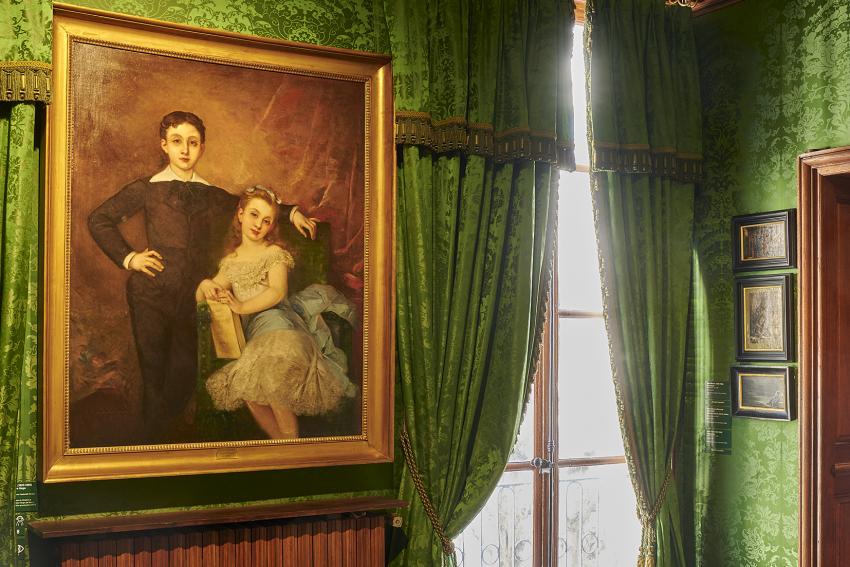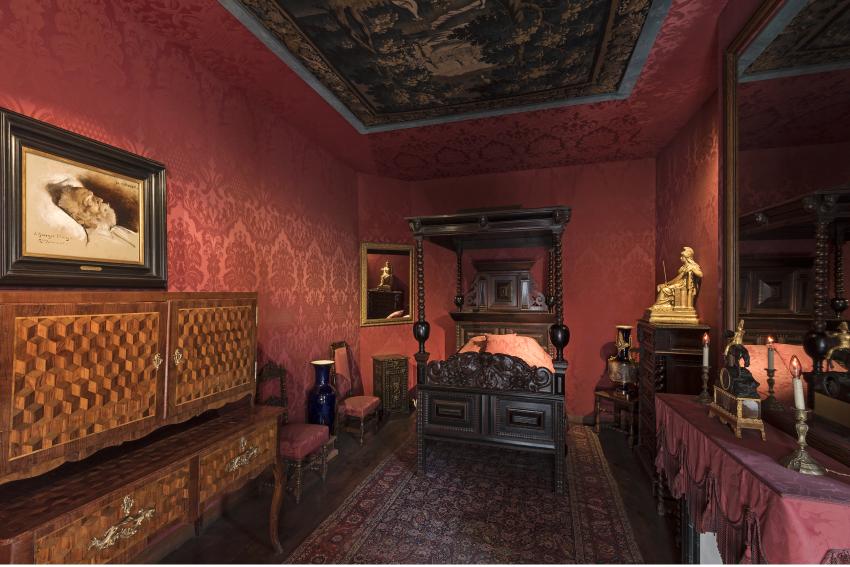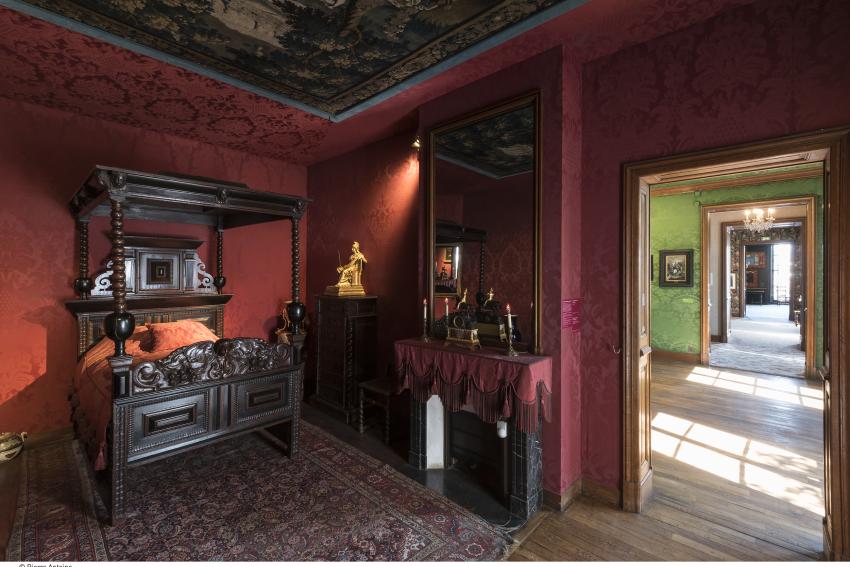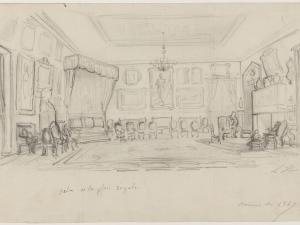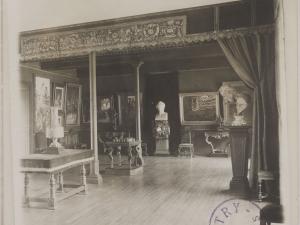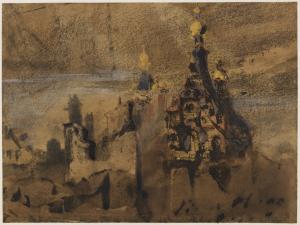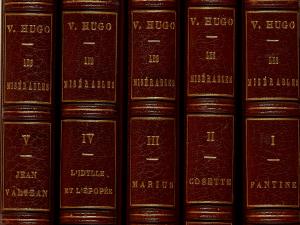Visit the apartment today
The apartment that Victor Hugo rented from 1832 to 1848 is located on the 2nd floor of 6, Place Royale (now Place des Vosges). Its layout takes you through his life by means of the furniture, objects and works of art that he created himself, owned, or are related to his writing.
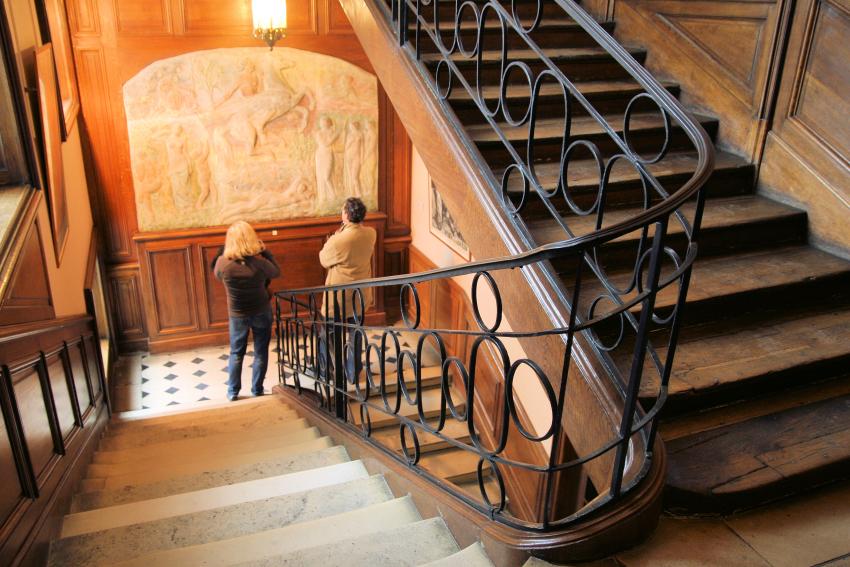
Before exile
Antechamber (Room 1)
This room gives us a feel for Victor Hugo's family and early life, up to his first literary success. The family portraits were mostly painted by his relatives or friends: the brothers Eugène and Achille Devéria; Louis Boulanger; his sister-in-law Julie Duvidal de Montferrier, who was a talented pupil of Baron Gérard, and Madame Hugo herself. The other works remind us that Victor Hugo was famous at a very young age – a rare occurrence at the time – in the three fields of literature: poetry (Les Orientales [Eastern Poems]), drama (Hernani), and prose (The Hunchback of Notre Dame).
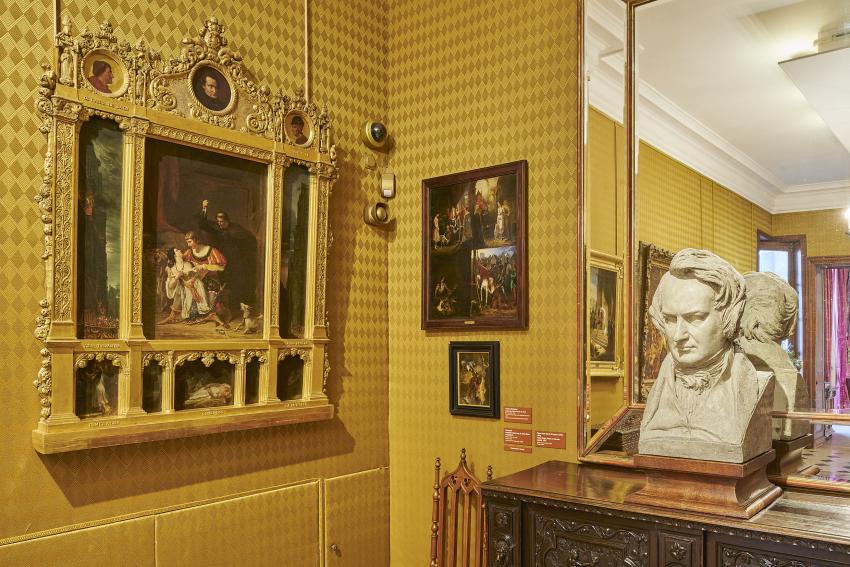
Red Drawing Room (Room 2)
Hung with red damask, this drawing room conjures the atmosphere of the apartment where, in Victor Hugo’s time, the great minds of literature, art and politics came together around the leader of the Romantic Movement. On the walls, you can see works of art that hung in the large drawing room in those days, such as the family portraits by Louis Boulanger and Auguste de Châtillon and the marble bust of the poet by David d'Angers. They show the status to which the poet rose, as he became a member of the Academie Française and then a Peer of France. Similarly, the painting illustrating the story of Inez de Castro was a gift from the Duke and Duchess of Orleans that reminds us of his links with the royal family. The other paintings illustrate works that were written during this period.
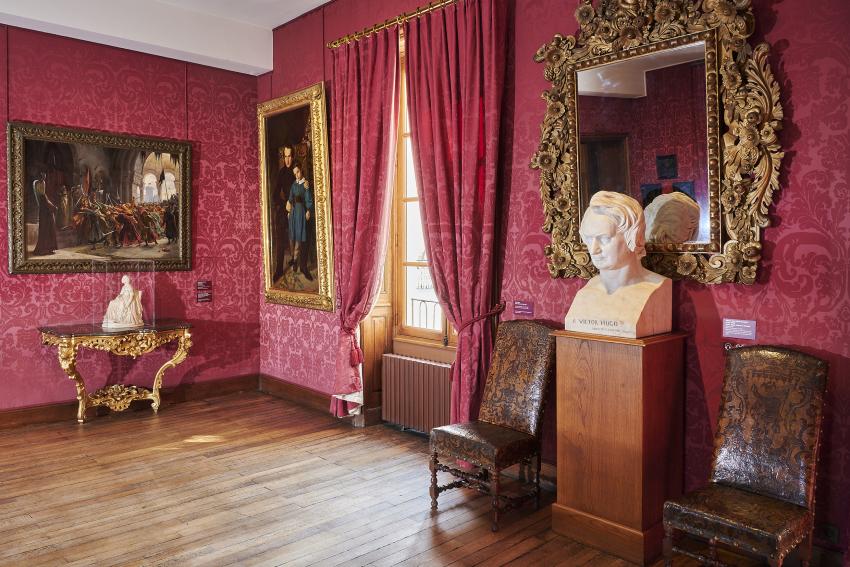
During exile
Chinese Room (Room 3)
Through this room and the next, we enter Hugo’s period of exile in Guernsey. They reveal a side of Victor Hugo's genius that remains little-known, his talent as an “interior designer”. The museum is uniquely positioned to present this aspect through the décor and furniture he designed for Juliette Drouet's house, Hauteville II.
Purchased for the museum by Paul Meurice from Juliette's nephew, this décor has been installed in a “Chinese Room”, with the help of the Asian art dealer, Siegfried Bing. It has thus been separated from the Gothic-inspired furniture with which it shared a space in the Guernsey house. Originally, this décor filled four rooms in Hauteville II (a small sitting room, the main bedroom, the dining room, and a small bedroom). These Chinese-style panels were designed by Hugo in 1863-1864 and painted with the help of Tom Gore, a craftsman who was already working on the refurbishment of Hauteville House. They form a backdrop for the porcelain that covers the walls and lines the shelves. The poet's imagination unfolds in a dream of fantasy and humour, peppered with intimate allusions to his beloved and the monograms VH and JD.
Madame Hugo's dressing table and chairs from her bedroom at Hauteville House complete the set, along with the Table with Four Inkwells (belonging to Lamartine, Dumas, Sand and Hugo). This object, designed by Victor Hugo, was intended for a charity auction for the poor children of Guernsey.
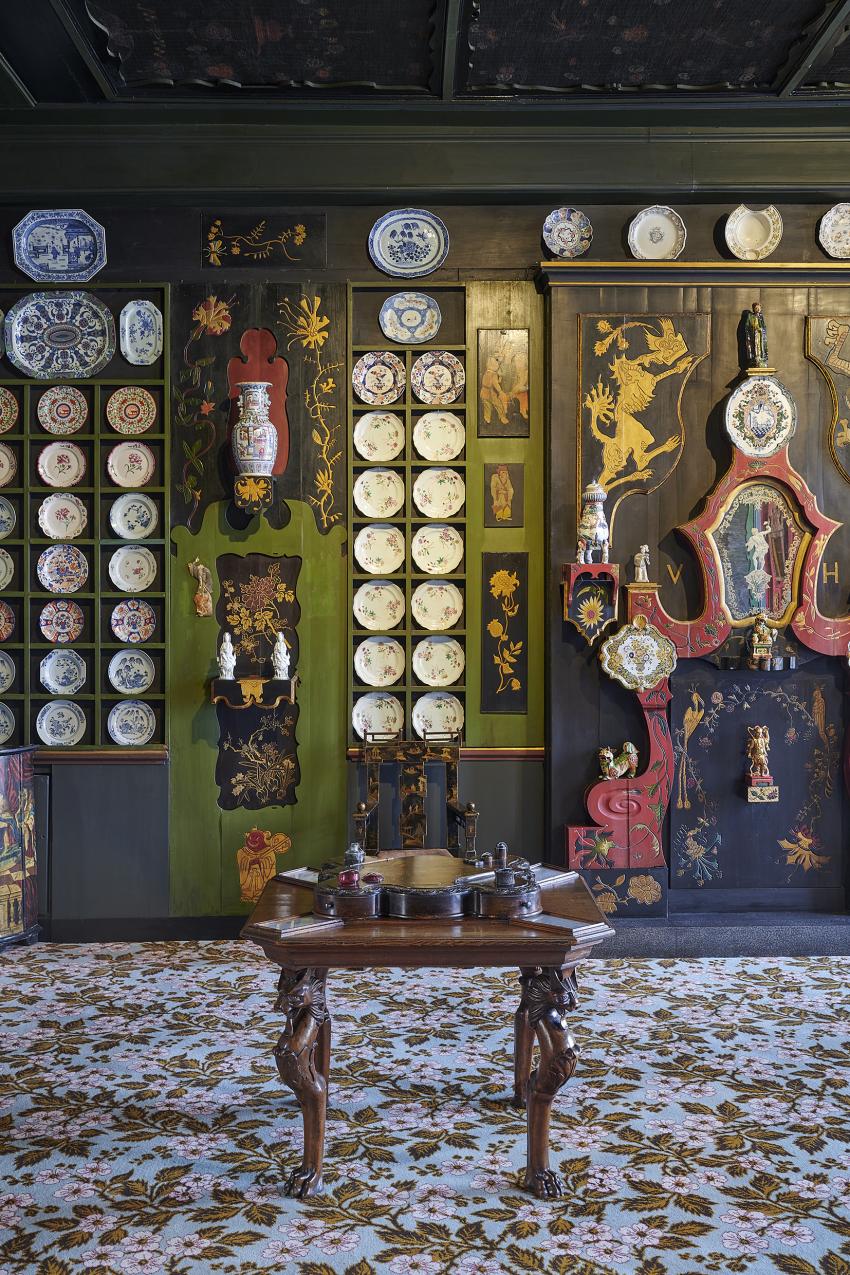
Dining Room (Room 4)
Hugo’s fondness for Gothic furniture, already evident in the Place Royale apartment, blossomed with the furnishing of Hauteville House and both houses successively occupied by Juliette Drouet (La Fallue and Hauteville II). Hugo, often accompanied by Juliette or his sons, would go on a “hunt for old chests” on Guernsey. At that time, he was also buying furniture from the Haute Epoque and Renaissance periods. He then had them dismantled and reassembled to suit his imagination. The work was carried out, based on his drawings, by a team of Guernsey carpenters led by Pierre Mauger. Thus a door became a table, chests became sideboards or benches, reels became candle-rings, and table legs became columns to give the furniture a Gothic look. The poet gifted the desk where he wrote the first series of The Legend of the Ages to Juliette in 1859. This is an example a romantic relationship being expressed through objects.
The paintings and sculptures that complete this room recall works that were written during exile (The Legend of the Ages, Les Misérables, Toilers of the Sea and The Man Who Laughs).
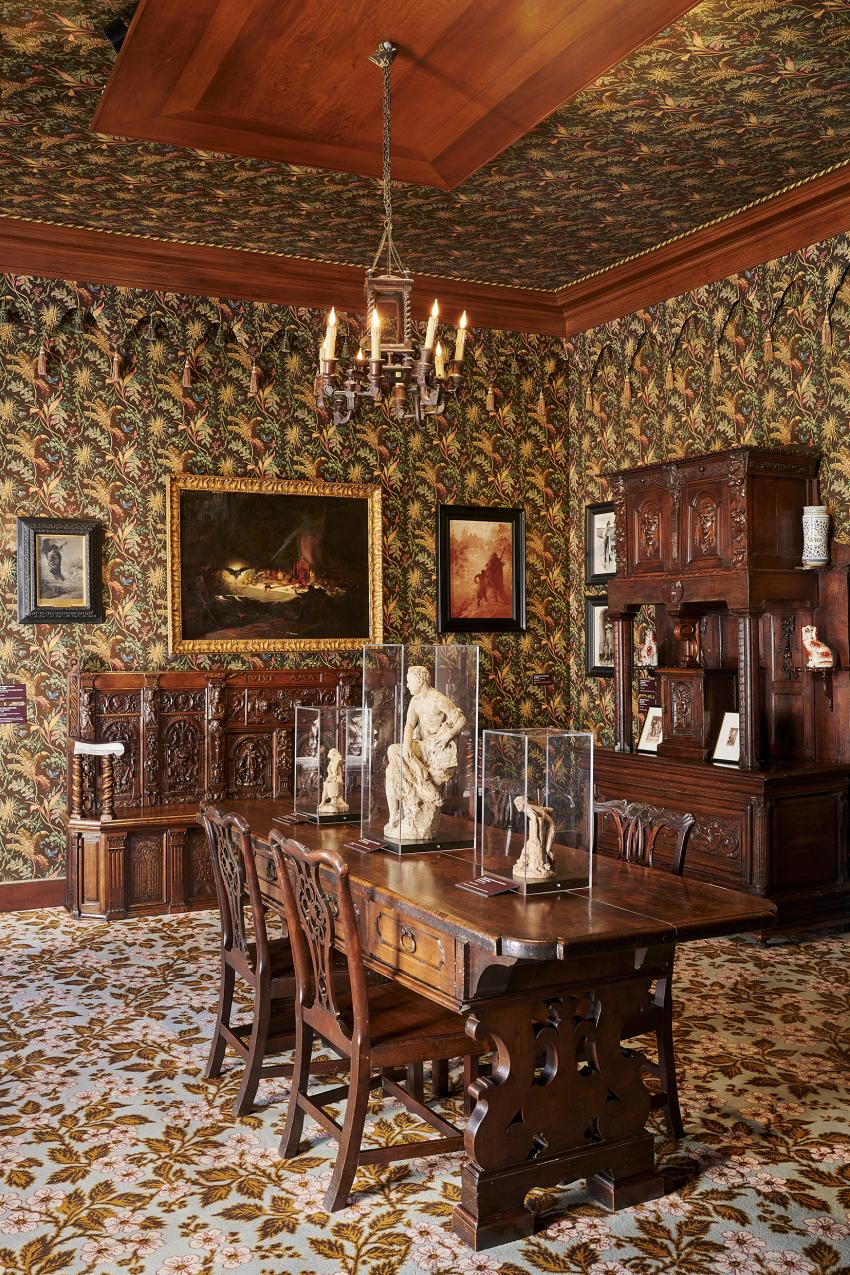
Small Study (Room 5)
This room is now used for small exhibitions around a topical theme, allowing the public to see works from the museum's rich collections (including drawings, photographs, engravings, manuscripts, prints, etc.) which cannot be permanently displayed for conservation reasons.
After Exile
Study
This room evokes the writer's study, as well as Victor Hugo's success and popularity after his return from exile in 1870. Around the standing desk set up by Hugo towards the end of his life, his iconic portrait by Léon Bonnat and Rodin’s Buste Héroïque [Heroic Bust] seem to immortalise Victor Hugo. The grisaille paintings for the monumental illustrated editions of his complete works also recall the writer's prominent position. Le portrait de Georges et Jeanne, evokes L’Art d’être grand-père [The Art of Being a Grandfather] and the affection that Victor Hugo transferred to his grandchildren after the death of his sons. This period marked by mourning is also evidenced by the moving portrait of Juliette Drouet, painted by Bastien-Lepage a few months before her death.
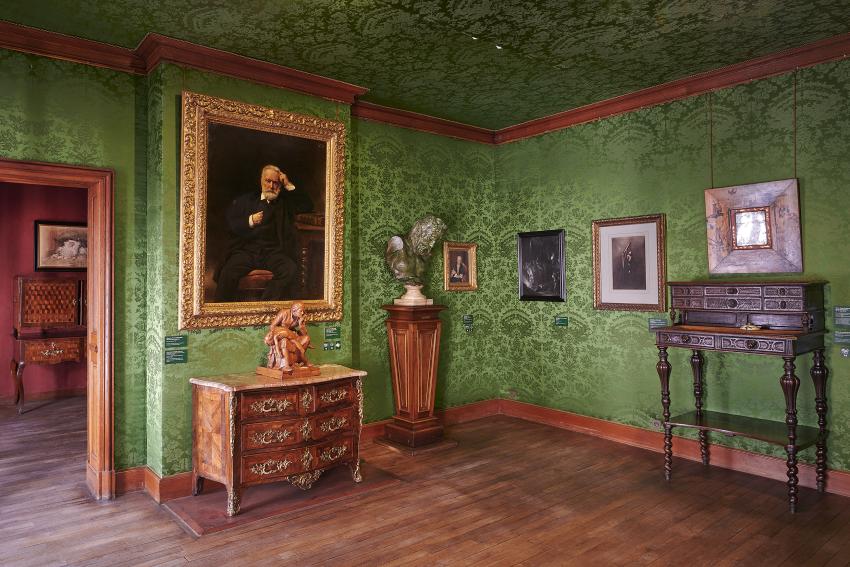
Bedroom
From 1878 until his death in 1885, the poet lived at 130, avenue d'Eylau, which was renamed avenue Victor Hugo in 1881. Thanks to the generosity of his grandchildren, Georges and Jeanne, Victor Hugo's final bedroom has been faithfully reconstructed. This furniture is completed with the Sèvres vases that the government gave him for his 79th and 80th birthdays, as well as with several mourning portraits. It was in this bed that Victor Hugo died on 22 May 1885 and his body lay in state, before his state funeral on 31 May and 1 June.
Add Here he wrote some of his major works: Mary Tudor, Ruy Blas, Les Burgraves [The Commanders], Les Chants du crépuscule [Songs of Twilight], Les Voix intérieures [Inner Voices], Les Rayons et les Ombres [Beams and Shadows], a large part of Les Misérables, and the beginning of The Legend of the Ages and Contemplations.
